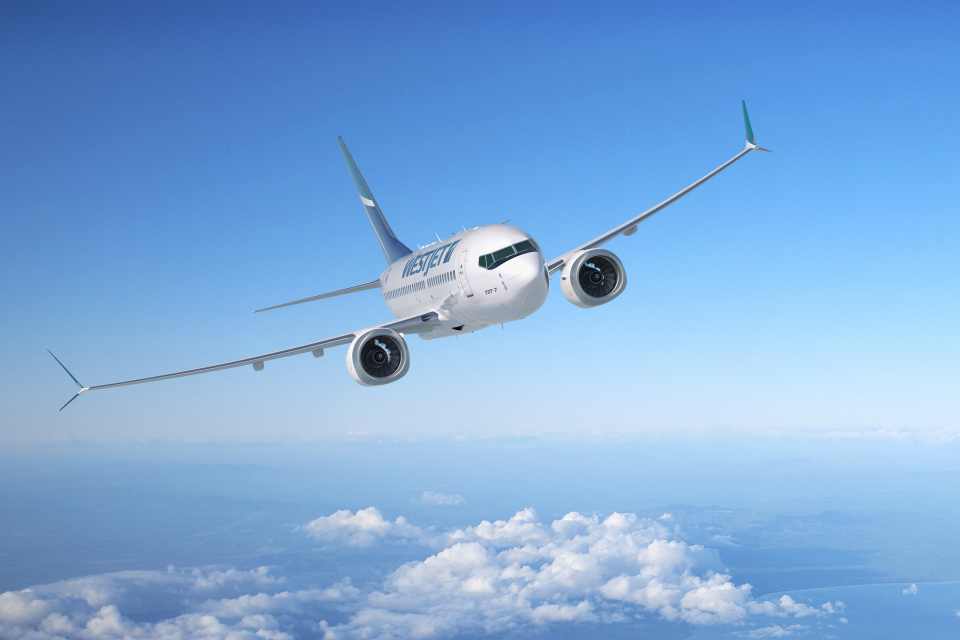Aviation
WestJet to purchase Boeing 787-9 Dreamliners

CALGARY, May 2, 2017 /CNW/ – WestJet announced today a definitive purchase agreement with The Boeing Company for up to 20 Boeing 787-9 Dreamliner aircraft. This agreement includes commitments for 10 Boeing 787-9 aircraft to be delivered between the first quarter of 2019 and December 2021, with options for an additional 10 aircraft to be delivered between 2020 and 2024. The airline also announced it has selected General Electric’s GEnx-1B engine for the 787.
The Boeing 787-9 Dreamliner is a state-of-the-art aircraft that is 20 per cent more fuel efficient than the Boeing 767 aircraft. With a range of more than 14,000 kilometres, the Dreamliner will give WestJet the ability to serve new destinations in Asia and South America, and to expand its service offerings into the European market.
“We welcome WestJet to the Dreamliner family and look forward to the new destinations they will serve,” said Ray Conner, Vice Chairman of The Boeing Company. “WestJet, for its entire 21-year history, has been a loyal all-Boeing jet customer and we’re excited to see them expand their fleet with the 787.”
“Our ability to compete globally and deliver our plan comes from the hard work and dedication of our more than 12,000 WestJetters and I am excited for what this news represents for them,” continued Gregg Saretsky. “They are truly representative of our Canadian values of warm hospitality and openness and on behalf of them, we now turn our attention to welcoming the Dreamliner to the WestJet family.”
As part of this purchase agreement, WestJet is converting 15 firm orders for the Boeing 737 MAX that were to be delivered between 2019 and 2021 to options available between 2022 and 2024.

Aviation
Airbus Enhances A350 Cabin with 10-Abreast Seating

Airbus has announced a new partnership with Jiatai Aircraft Equipment, a Chinese aircraft seating manufacturer, to supply upgraded economy-class seats for the A350 widebody series.
This collaboration, unveiled at the 2024 Airshow China, focuses on developing a newly designed economy seat tailored for the A350‘s New Production Standard (NPS) cabin.
One of the key features of the NPS cabin is the ability to accommodate 17-inch wide economy seats, compared to the previous 16.5-inch wide seats that airlines were limited to in the A350’s earlier configurations.
British Airways Unveils Its Brand-New First Class Cabin for the Airbus A380
This change is made possible by the expanded space in the NPS cabin, which is 35 inches longer and 4 inches wider than the previous version. This extra space is achieved by slightly moving the cockpit wall forward and shifting the rear pressure bulkhead back by one frame.
The wider cabin allows airlines to add up to 30 extra economy seats without compromising comfort. For airlines opting for a 3-4-3 seating layout, the 17-inch wide seats are an excellent choice for a more comfortable passenger experience. However, some airlines, such as Iberia, may choose to retain a 9-abreast layout with wider seats for added comfort.
The NPS cabin also offers enhanced flexibility for airline operators. One major advantage is the ability to easily switch between a 9-abreast and 10-abreast seating configuration without requiring significant downtime for aircraft reconfiguration. Airlines can use the same seat rails, tracks, and IFE interfaces, making the transition smoother and quicker.
Etihad Airways Unveils 10 Exciting New Routes for 2025
In addition, the design of the floor attachments and air-conditioning systems has been optimized for 10-abreast seating, meaning airlines can upgrade their cabins without needing to make substantial modifications to the aircraft’s structure.
Though it’s still unclear when Jiatai’s economy-class seats will be officially added to the A350’s Buyer Furnished Equipment (BFE) catalogue, the collaboration marks a significant step toward enhancing the A350’s cabin offerings.
With this partnership, Airbus is providing more seating options for airlines, ensuring that they can meet diverse customer needs while improving overall operational efficiency.
-

 Aviation2 months ago
Aviation2 months agoMicrosoft Flight Simulator Raises $3 Million to Bring Back the An-225 Mriya
-

 Airlines2 months ago
Airlines2 months agoQatar Citizens Can Travel to the United States Without a Visa
-

 Aviation2 months ago
Aviation2 months agoQatar Airways bans these new Electronic Devices on plane
-

 Airlines2 months ago
Airlines2 months agoJapan Airlines Rolls Out Free Domestic Flights to International Passengers
-

 Travel2 months ago
Travel2 months agoQatar Airways Launches Four Additional Flights from Amsterdam
-

 Defence2 months ago
Defence2 months agoWhich Country Has the Largest Fleet of Fighter Aircraft?
-

 Airport2 months ago
Airport2 months agoWestern Sydney Airport Welcomes Its First Plane After 6 Years of construction
-

 Airlines4 days ago
Airlines4 days agoDAMAC Air: Dubai’s New Luxury Airline Offers Free Flights for Registration








